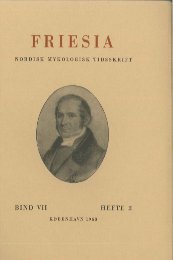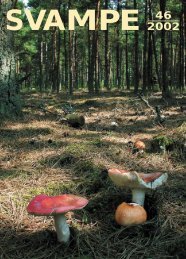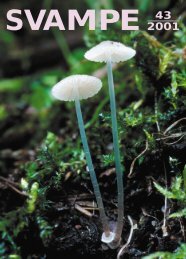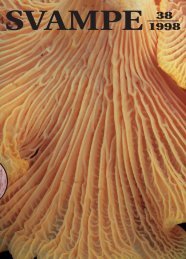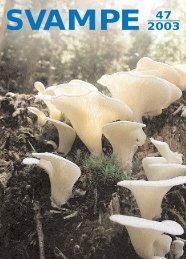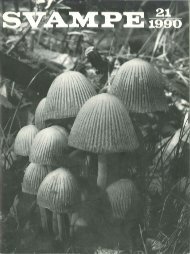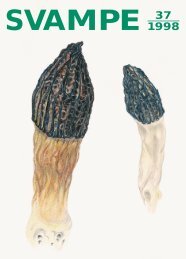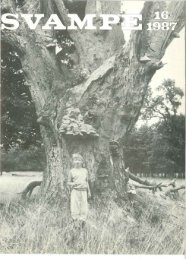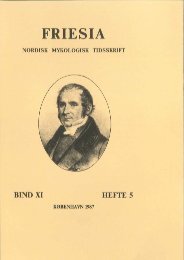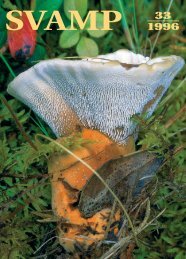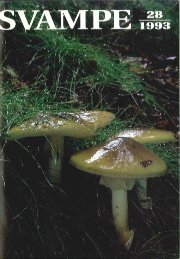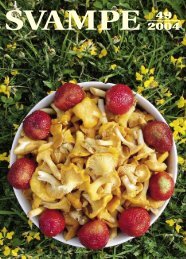Friesia X, 4-5
Friesia X, 4-5
Friesia X, 4-5
Create successful ePaper yourself
Turn your PDF publications into a flip-book with our unique Google optimized e-Paper software.
- 248-<br />
pelaqica, Remispora hamata, R. maritima and certain Lulworthia spp.,<br />
some of which are undoubtedly contained in the Danish Lulworthia<br />
material. In an annotated check-list of marine fungi from the coasts<br />
of New England (KOHLMEYER 1971) 22 of the species from Grønhøj<br />
are also listed.<br />
The lignicolous and arenicolous marine species as represented in<br />
the Danish material in the groups 1 and 2 respectively all appear to<br />
live in and on wood. They are wood-inhabiting marine fungi. None<br />
have been found fruiting in the sand without being in close contact<br />
with the wood. The location of the fruit bodies in group 2 (and 1 b)<br />
seems to afford these fungi extremely good propagation possibilities<br />
on coasts where the driftwood can be deposited in a humid condition<br />
and undisturbed for a sufficient length of time. It would be of interest<br />
if characters other than the location of fruit bodies, e.g. some<br />
physiological characters, could be found to contribute to the differences<br />
in the way of life in these two groups of fungi. It must be<br />
remembered that the environment of zone 3 also favours an abundant<br />
fruit body formation among the group 1 a fungi. However, this latter<br />
group does not require such an environment. They are capable of<br />
propagation in the open sea. It is possible that fungi from both groups<br />
can live as limited mycelia in the sand without being revealed by<br />
fruit body formation. This could be suppressed as a consequence of<br />
nutritional deficiency or as aresult of linkage to a certain mode of<br />
fructification (immersed perithecia).<br />
The fate of the large spore produetion in zone 3 is a matter of<br />
conjecture. Do the spores retain their viability for so long a period<br />
that they are still viable when the sea reaches the base of the dunes<br />
during storms? Are spores carried back into the sea by surface water<br />
after heavy rain?<br />
Driftwood deposited in zone 3 to some extent during the autumn<br />
and winter storms is known to be drawn out by the waves and<br />
eventually again deposited further down the coast. By this treatment<br />
all types of perithecia will be destroyed and the liberated spores partly<br />
deposited in the water. The infection of buried wood by fungi from<br />
group 1 and 2 is also known to take place at the base of the dunes,<br />
but whether the source of infection is spores, fragments of mycelium<br />
or small pieces of organic matter is uncertain. A number of<br />
questions remain to be solved before the role of the upper beach in<br />
a locality such as Grønhøj in the propagation of marine fungi can be<br />
elucidated.



